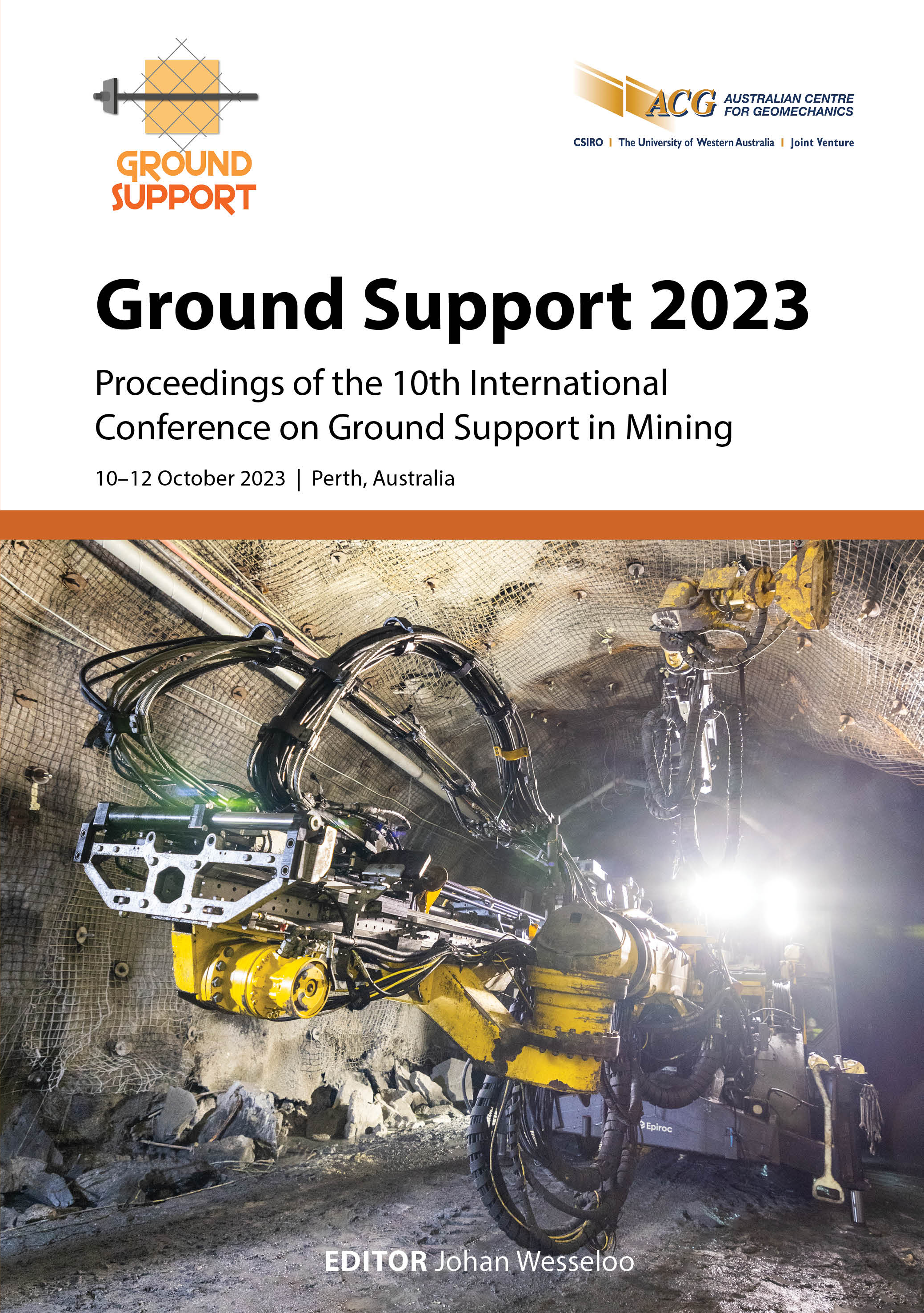Case study: use of rebars with microalloyed steels in tunnels with induced seismicity

|
Authors: Muñoz, A; Cifuentes, C |
DOI https://doi.org/10.36487/ACG_repo/2325_09
Cite As:
Muñoz, A & Cifuentes, C 2023, 'Case study: use of rebars with microalloyed steels in tunnels with induced seismicity', in J Wesseloo (ed.), Ground Support 2023: Proceedings of the 10th International Conference on Ground Support in Mining, Australian Centre for Geomechanics, Perth, pp. 141-150, https://doi.org/10.36487/ACG_repo/2325_09
Abstract:
The planned El Teniente mine conveyor tunnel has a length of over 9 km, going from the underground mine to the surface and is currently being developed with four active advance faces: from the surface, from inside the mine, and two faces with access through the construction decline facility called P4600. The conveyor tunnel will be used to extract all the production of El Teniente mine and therefore has a strategic role for the corporation. In early February 2023, a high-magnitude induced seismic event was recorded near the face of the Correa tunnel. Due to its energy and magnitude characteristics, this seismic event is the highest recorded in the El Teniente project’s tunnels and developments. Due to the high induced seismic activity experienced in this tunnel in recent years, the El Teniente division has implemented a ground support design focused on improving the interaction between the support elements that make up the support system. The aim is to enable the system to dissipate energy, deform, and maintain the stability of the tunnel during large seismic events. In particular, the retention capacity has been increased, and reinforcement bars with microalloyed steels have been used to enhance the probability of the bolt achieving the desired behaviour; that is, a ductile behaviour that fully develops its toughness.
Keywords: ground support, El Teniente mine, dissipate energy, ground control
References:
Muñoz, A, Celis, S & Rojas, E 2014, Energía, Deformación y Corrosión en Elementos de Fortificación y Lineamientos Generales Para Fortificación, internal report (in Spanish), Codelco.
Muñoz, A, Rojas, E & Zepeda, R 2016, Methodology For Incorporating New Elements of Support for the Mine Design in El Teniente Mine, internal report, Codelco.
Rojas, E, Landeros, P & Cifuentes, C 2022, ‘Rock burst risk management to make tunnel construction feasible in high stress environments’, Proceedings of RaSiM10: Rock bursts and Seismicity in Mines, Society for Mining, Metallurgy & Exploration, Engelwood.
Villaescusa, E, 2014, Static and Dynamic Laboratory Testing of Rock Reinforcement Systems Stage I and II, Western Australian School of Mines, Curtin University of Technology, Perth.
© Copyright 2025, Australian Centre for Geomechanics (ACG), The University of Western Australia. All rights reserved.
View copyright/legal information
Please direct any queries or error reports to repository-acg@uwa.edu.au
View copyright/legal information
Please direct any queries or error reports to repository-acg@uwa.edu.au
